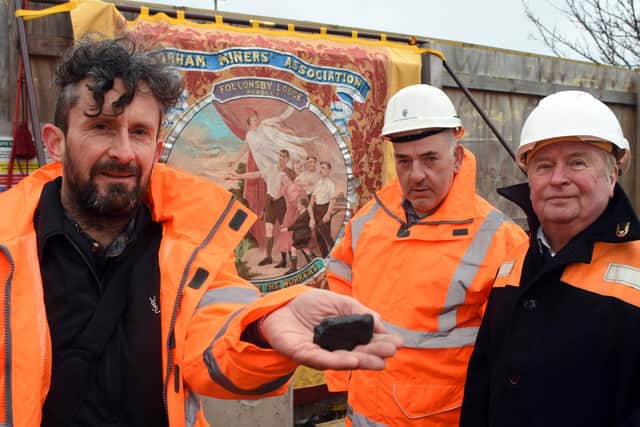Past meets present on innovative minewater scheme in Hebburn
and live on Freeview channel 276
Coal extracted from abandoned mines of the former Hebburn Colliery has been presented to a miners’ heritage group, which will be used on education projects about the area’s mining past.
The core sample was extracted from a pilot borehole for the Hebburn Minewater Scheme and handed to Follonsby Wardley Miners Lodge Banner Community Heritage Association.
Advertisement
Hide AdAdvertisement
Hide AdThe multi-million-pound minewater system will see geothermal energy drawn from flooded mines and used to heat council-owned buildings in the town, cutting annual carbon emissions by hundreds of tonnes.


Cllr Ernest Gibson, Lead Member with responsibility for climate change, said: “As a former miner myself, it gave me great pleasure to hand over this coal sample.
“It is part of the borough’s mining legacy and will now be preserved for new generations to learn about our industrial past.
“The Hebburn Minewater scheme will be a key component in our drive towards carbon neutrality and I think it’s fantastic that mines are once again going to be producing energy – just a different form.”
Advertisement
Hide AdAdvertisement
Hide AdThe project will work by extracting the minewater with a water source heat pump before it is compressed to a much higher temperature.
It will then feed into an energy centre located above ground and then be distributed via a new pipe network to buildings in the town centre, including a residential tower block.
David Douglass, Secretary of Follonsby Wardley Miners Lodge, Community Heritage Association, requested the coal sample.
He said: “This really is a little piece of history.
“I was a miner all my working life and to me it is thrilling that they have managed to get a sample of coal from a seam section from a mine that’s been closed for decades.
Advertisement
Hide AdAdvertisement
Hide Ad"This is a great project that will produce clean, renewable energy without damaging the mines.
“I do tours of schools, colleges and museums and talk to them about geology, mining gases and what it was like to be a miner and I’ll be able to take this coal sample with me. Children tend to be fascinated by things like that.”
The scheme, which has secured over £3.9million in funding from the European Regional Development Fund, has being developed in collaboration with the Coal Authority and Durham University.